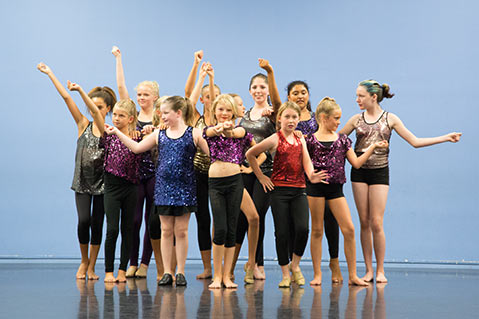Santa Barbara Dance Arts Makes a Difference Through Dance
How the Veteran Studio Serves the Community in New Space

A building ground for budding dancers, a buzzing hub for visiting world-renowned choreographers and Santa Barbara artists, a place to let loose, a home away from home — Santa Barbara Dance Arts (SBDA) is all of these and continues to be more. Since moving into its new space in January 2014 after skyrocketing rents forced them out of the Funk Zone, the dance studio has flourished with expanded programs and youth-mentorship opportunities, serving as a community center for all things choreographed, improvised, or en pointe.
Now in its 20th year, SBDA’s is a “tale of how the arts can survive in S.B.,” director Alana Tillim says. Calling their neighborhood migration “a success story out of the Gentrification Exodus” wherein rising property costs forced many creative souls out of their Funk Zone abodes, the dance studio has managed to expand in its new space on Cota by offering affordable spaces to rent for visiting artists, Fiesta dancers, and area theater companies, on top of its wide array of master classes, adult programs, and workshops. In light of the recent Oakland Ghost Ship fire, Tillim says, the need for affordable creative spaces has never been more evident, with rising rents, permitting protocols, and parking modifications all strangling creative construction.
Most remarkable, though, is SBDA’s partnership with the Arts Mentorship Program (AMP), a separate nonprofit cofounded by SBDA founder Steven Lovelace and Tillim. Providing dance and creative arts opportunities for children in Santa Barbara who otherwise could not afford them, AMP’s one-to-one mentorship program has expanded “exponentially” thanks to a sub-tenancy at the new Cota space, wherein SBDA donates up to $85,000 per year in in-kind services, staff time, supplies, and studio and office space. Working with CASA Santa Barbara, Transition House, CALM, and creative partner Teen Star Santa Barbara, among many others, the AMP gives scholarships to children in homeless shelters, foster care, or abusive family situations. “Dance is one of the only things that sustains these kids. It brings them joy,” Tillim said. Last year’s Teen Dance Star event helped raise $3,000 for AMP youth dance scholarships, and SBDA’s own student company raised another $8,000.
SBDA promotes work that is socially conscious and progressive in an environment that is supportive and nurturing, Tillim said. It’s a community space with a “wonderful hometown heart … a training ground for the next generation for artists, and, inside of that, a place where women can feel good about themselves, empowered, and smart.”
Recent pieces include one choreographed by two separate teens who had been bullied to the point of authority intervention, a piece last year addressing the Isla Vista shootings, a post-2016-election reflection, and an Orlando shootings tribute titled “Stop the Hate,” which moved judge Tyce Diorio to tears at a competition in Anaheim. “We’re not afraid of tackling issues, and we feel dance gives kids a tool to speak about them,” Tillim said.
SBDA stands out, as well, for teaching about a kind of self-acceptance and self-esteem that isn’t based on appearance, Tillim said. While the rest of the youth dance world has seen “costumes getting smaller, and the moves more provocative,” SBDA in form and practice offers a different image of female empowerment and recognition than the overtly sexual choreography popular nationally; Toddlers and Tiaras they are not. “We let girls be girls. We let them be valued without wearing lingerie,” Tillim said.
Upcoming events include a mother/daughter dance intensive, a March dance showcase, and world-class summer instructions in hip-hop, contemporary, jazz, and others. With spring semester classes beginning the first week of January, now would be a great time to kick-start a career in dance, be you a dancer of any age or the parent of one.



